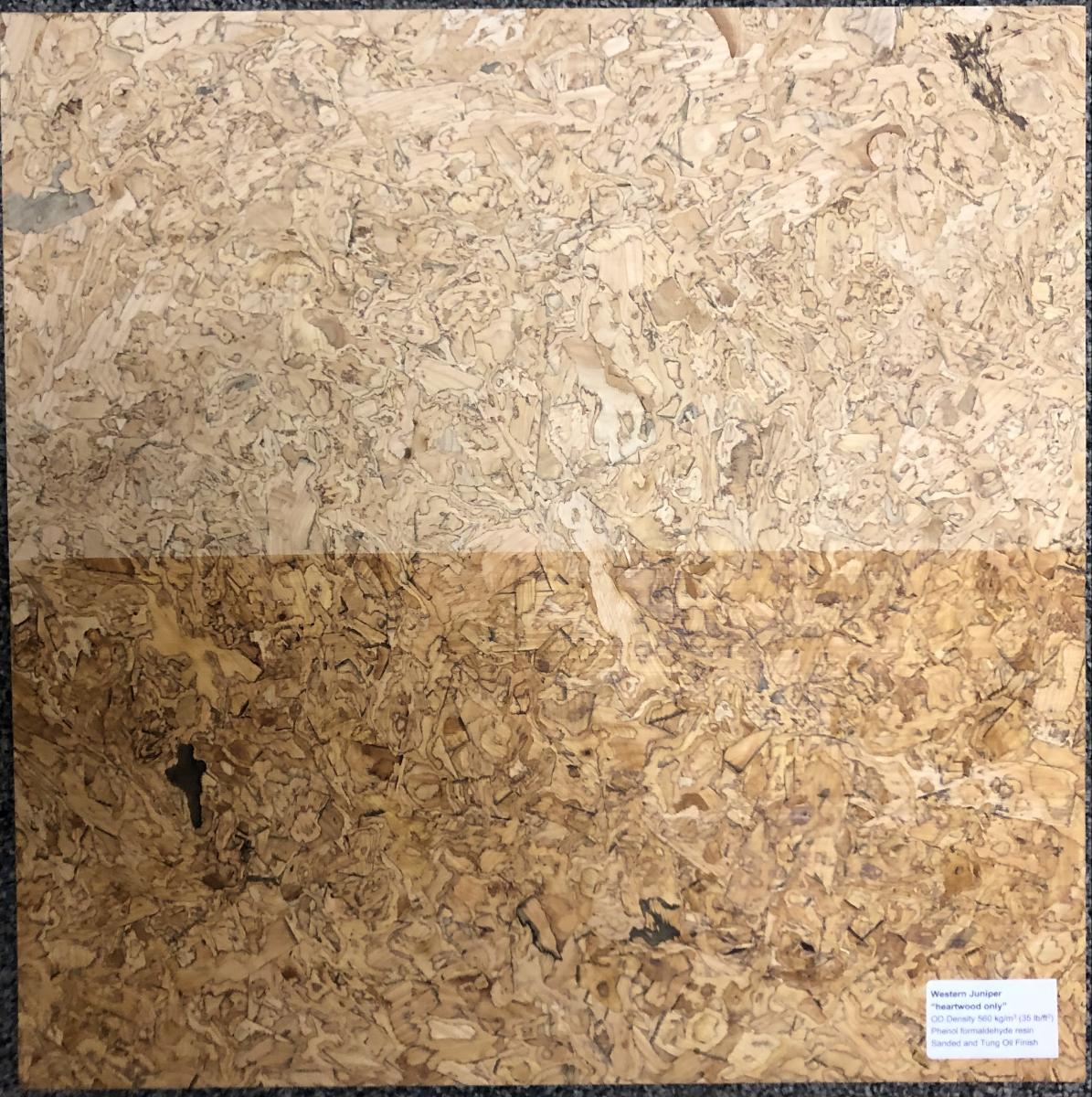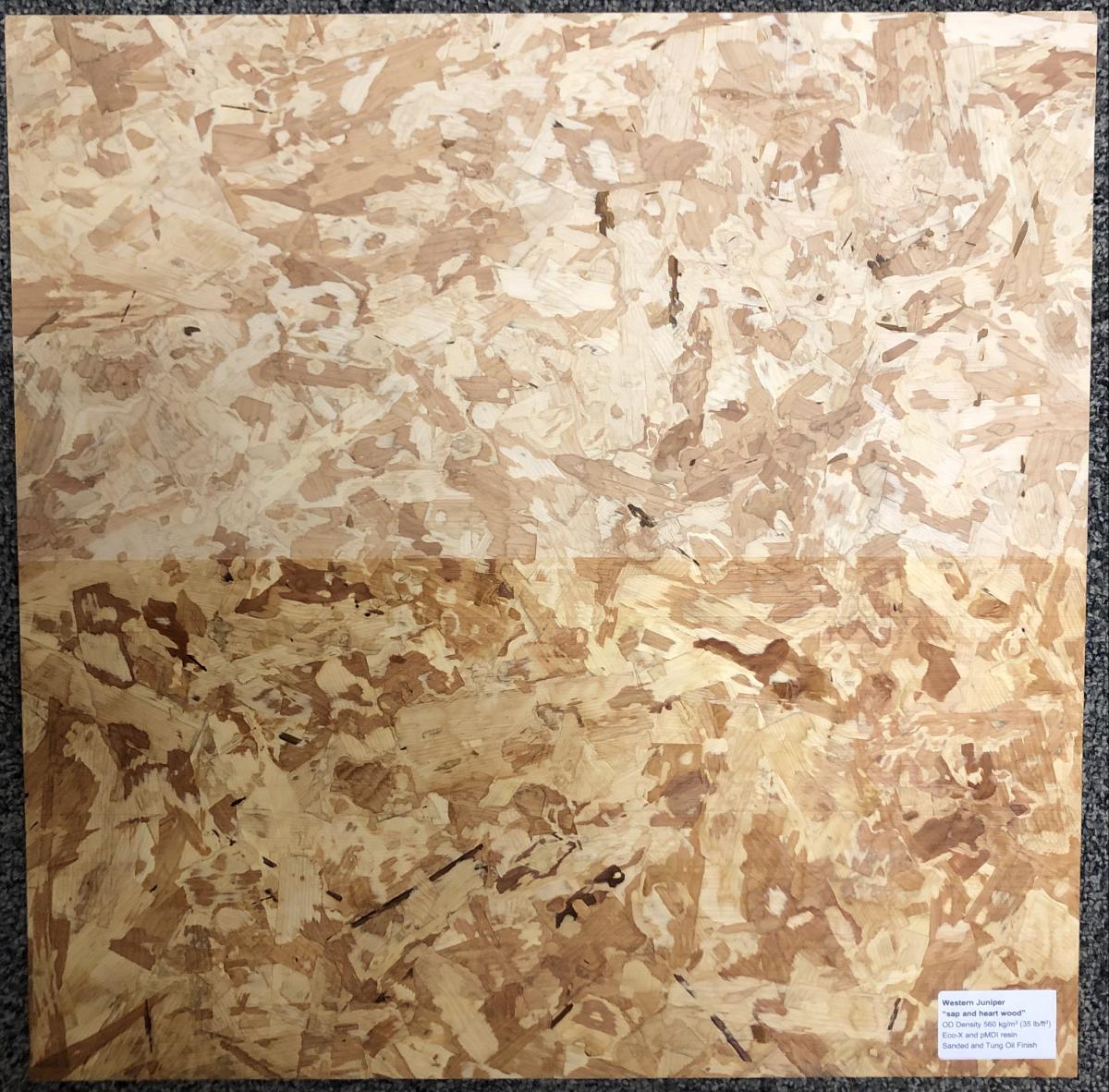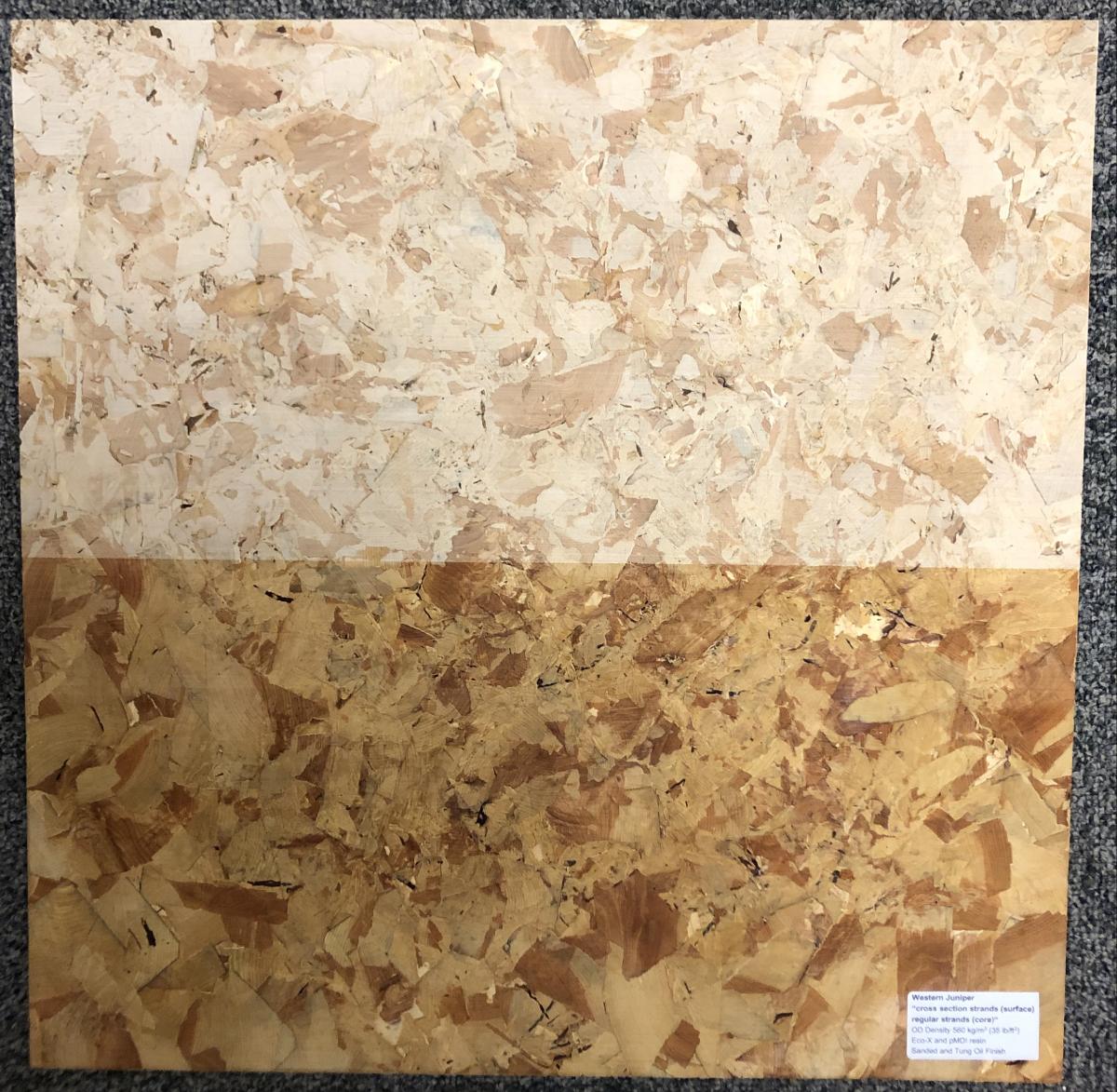Development of Composites from Western Juniper Residues
(last updated 12/14/2023 - fixed broken links)
Key Documents
- Presentation slides from 3/18/2020 webinar
- Presentation slides from 5/19/2021 webinar; video recording of the webinar
- Properties of western juniper (Juniperus occidentalis) strandboard (article in BioResources journal)
- Utilization of western juniper (Juniperus occidentalis) in strandboard to improve decay resistance (article in BioResources journal)
- Final project report
Significant efforts have been made to develop markets for solid wood products from western juniper. For example, engineers require published design values for a species before they can specify the species in a structure. Such design values have now been developed for western juniper. However, profitability of sawmills often hinges on their ability to achieve ‘full utilization’ of their resource. That is, viable markets are needed for solid wood as well as residues like edgings and trim ends (material removed in trimming a board to width and length, respectively), slabs (half-round shapes produced as logs are first sawn from round shapes into squares), sawdust, and shavings. There are however, still quite limited market opportunities for such residues from western juniper. Common residues and their current market options are shown below.
| Explored in this project | Residue | Description | Current Market(s) |
|---|---|---|---|
| Yes | Slabs | From outer diameter of tree, predominantly sapwood with bark | Firewood |
| Yes | Edgings | Generated as boards with rough edges are trimmed to width; heartwood and sapwood, some bark | Often burned as fuel at sawmills |
| Yes | Peeler shavings – with bark | Sapwood | Garden mulch |
| ? | Peeler shavings – without bark | Produced by pole peeler, primarily sapwood | Can be sold to particleboard mills |
| Yes | Sawdust | Includes sapwood, hardwood, and some bark Note: the geometry of these particles varies with the type of saw used | None |
| No | Planer shavings | Sap heart | Very limited production (from secondary manufacturers using juniper) |
| No | Limbs | Generally left in the forest when the trees are harvested | Firewood |
| Not directly (leaf oil used in durability testing) | Foliage | Generally left in the forest when the trees are harvested | Essential oil |
The primary objectives for this project were to develop and test the material properties of prototype panels (conventional particleboard and strandboard) from a variety of western juniper residues, i.e., those noted in column 1 of the table.
Details and results for each type of panel were as follows:
| Particleboard | ||
|---|---|---|
| Phase | Species & materials | Properties tested |
| 1 Pilot | Douglas-fir; Juniper sawdust: bandsaw, circular saw (w/ & w/o bark), heartwood, sapwood | Particle size Density, moisture content, thickness swell, water absorption |
| 2 Refining the recipe | Same as Phase 1 Differing levels of wax (0, 0.5, 1%) Particle screening (to mimic Douglas-fir panels) | Density, thickness swell, water absorption |
| 3 Blends | Douglas-fir, ponderosa pine Blended with juniper (5, 10, 20%) (bandsaw, edger, circular saw sawdust) | Density, thickness swell, water absorption, linear expansion |
| 4 Mech. props. of 3-layer panels | Douglas-fir, juniper | Density, thickness swell, water absorption, bending (MOR/MOE), internal bond |
Results: •Juniper sawdust particles can be used to produce particleboard, mixed-species or 100% juniper panel •Juniper sapwood and edger dust: TS > than DF panels •Bandsaw & circular saw sawdust (mostly heartwood) - comparable moisture behavior to DF panels •Blends - no difference in thickness swell compared to control panels (i.e., 100% fir and pine panels) after 24-hour water soak •Acceptable to include small fractions of bark | ||
| Strandboard | ||
|---|---|---|
| Phase | Species & materials | Properties tested |
| 1 vs Aspen | Aspen Mixed juniper heartwood and sapwood | Density, internal bond, thickness swell, water absorption, linear expansion |
| 2 vs. pine | Southern yellow pine Juniper - sapwood, heartwood, sap/heart mix (w/bark), sap/heart mix (w/o bark) | Density (inc. x-ray profile), thickness swell, water absorption, bending (MOR/MOE), internal bond, screw withdrawal (face & edge) |
| 3 Durability | Southern yellow pine Juniper sapwood - panels from strands impregnated w/juniper leaf oil Panels impregnated w/juniper leaf oil post-pressing | Resistance to fungal decay (2 brown rot fungi, 1 white rot fungus) |
Results: •Heartwood & sapwood strands can be used to produce panels even w/approx. 10% bark •Panel properties - equivalent or slightly better than SYP panels w/one exception – •bending stiffness higher for high-density SYP than all-heartwood juniper panels •Durability – heartwood strandboard highly decay resistant •Decay resistance - impregnating sapwood (strands or finished panels) led to increased decay resistance to one of the two brown rot fungi tested but not other brown rot fungus or a white rot fungus. •IB strength - impregnating strands prior to pressing resulted in panels with reduced internal bond strength compared to panels impregnated after pressing; bond strength for all juniper panels (w/ & w/o essential oil) exceeded SYP panels | ||
Recommendations
Small Residues (sawdust, shavings)
- Collect and segregate residues by process (for example, primary breakdown saw vs. edger)
Larger Residues (slabs, edgings)
- Entrepreneurial venture needed to acquire materials, produce strands, and produce decorative panels
Future Research
- Test insect-resistance of panels (as closet liner) with and without oil impregnation
- Explore economic feasibility and supply
- Assess haul distance and value of alternative uses
- Develop detailed estimates of potential supply of material by region
| Sample product images | |
|---|---|
 |  |
 | |
Acknowledgements:
This project was managed by Sustainable Northwest via funding received as a Business Oregon High Impact Opportunities Project (HIOPs).
